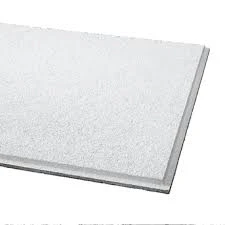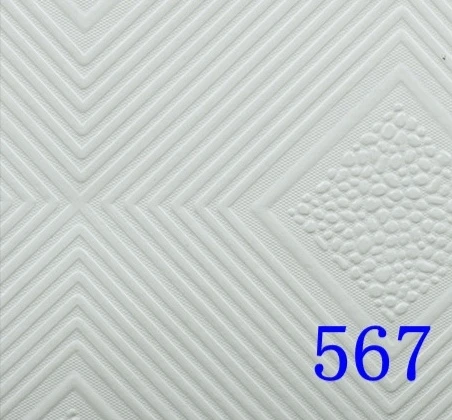- Afrikaans
- Albanian
- Amharic
- Arabic
- Armenian
- Azerbaijani
- Basque
- Belarusian
- Bengali
- Bosnian
- Bulgarian
- Catalan
- Cebuano
- Corsican
- Croatian
- Czech
- Danish
- Dutch
- English
- Esperanto
- Estonian
- French
- German
- Greek
- Hindi
- Indonesian
- irish
- Italian
- Japanese
- Korean
- Lao
- Malay
- Myanmar
- Norwegian
- Norwegian
- Polish
- Portuguese
- Romanian
- Russian
- Serbian
- Spanish
- Swedish
- Thai
- Turkish
- Ukrainian
- Uzbek
- Vietnamese
Giu . 01, 2025 12:49 Back to list
Affordable Drop Ceiling Grid Cost - Budget-Friendly Tiles & Kits
- Essential factors determining drop ceiling grid expenses
- Material technology advantages and durability metrics
- Comparative pricing analysis between leading manufacturers
- Customization options impacting grid ceiling cost
- Installation methods influencing overall project expenses
- Real-world application scenarios and budget outcomes
- Smart cost management solutions for grid systems

(drop ceiling grid cost)
Understanding Drop Ceiling Grid Cost Factors
Drop ceiling grid cost comprises multiple components including materials, labor, and design complexity. Industry data reveals material expenses account for 35-45% of total installation costs, with grids typically ranging between $1.25-$4.50 per square foot depending on material grade. For standard commercial spaces, expect to budget $1,500-$5,000 for grid systems in a 1,000 sq ft area. The cost of drop ceiling tiles adds another $0.75-$12 per sq ft, creating significant price flexibility. Hidden expenses like suspension systems, trim pieces, and seismic bracing can increase grid ceiling cost by 15-25%. Regional labor rates further impact final quotes, with coastal states averaging 20% higher than midwest installations.
Material Technology Advantages
Modern grid systems leverage manufacturing advancements that balance structural integrity with cost efficiency. Steel remains the dominant choice (78% market share) due to its strength-to-cost ratio, supporting up to 40% more weight than aluminum alternatives. Galvanized steel grids provide superior corrosion resistance in humid environments, lasting 30% longer than standard options. Recent innovations include anti-microbial powder coatings that reduce healthcare facility maintenance expenses by 18% annually. For specialized applications, aluminum grids weigh 45% less than steel, substantially lowering structural support requirements and shipping costs. High-performance polymers have entered the market, offering 100% moisture resistance at price points comparable to premium steel grids.
Manufacturer Comparison
| Brand | Material | Price/Sq Ft | Warranty | Load Capacity | Value Rating |
|---|---|---|---|---|---|
| Chicago Metallic | Galvanized Steel | $2.25-$3.75 | Lifetime | 12 lb/sq ft | ★★★★☆ |
| Armstrong World | Precision Aluminum | $3.90-$4.50 | 25 Years | 8 lb/sq ft | ★★★☆☆ |
| USG | Hybrid Steel | $1.85-$2.95 | 20 Years | 10 lb/sq ft | ★★★★☆ |
| CertainTeed | Polymer-Coated | $3.25-$4.25 | 30 Years | 9 lb/sq ft | ★★★★★ |
Custom Solutions Engineering
Specialized projects require tailored grid configurations that impact cost structures. Curved grid systems demand custom extrusion processes, adding 30-50% to material expenses. Seismic-rated configurations meeting OSHPD standards incorporate thicker gauge metals and specialized connectors, increasing costs by 25-35%. Fire-rated assemblies using UL-certified components add $1.50-$2.75 per sq ft premium. Accessibility-compliant designs with retractable grid sections cost 15-22% more but reduce long-term maintenance. For historical renovations, custom color-matching powder coating adds $0.85-$1.40 per sq ft while specialty finishes like brushed nickel or antique bronze can double grid ceiling cost compared to standard white finishes.
Installation Efficiency Factors
Labor constitutes 40-55% of total grid project expenses, with technique innovations offering savings opportunities. Snap-together grid systems reduce installation time by 30% compared to traditional screw-fastened models. Pre-engineered modular assemblies can lower labor costs to $1.15-$2.25 per sq ft versus $2.50-$4.50 for conventional methods. Integrated laser-leveling systems achieve 99% alignment accuracy while cutting setup time by 45%. Complex installations requiring BIM coordination add 10-15% to labor costs but reduce material waste by 22%. Height challenges: Grids installed above 15 feet incur 20-30% labor premium for scaffolding and safety equipment.
Application-Specific Case Studies
Healthcare Facility Retrofit: A 50,000 sq ft hospital selected antimicrobial-coated grids at $3.95/sq ft (total: $197,500), reducing annual sanitization costs by $32,000 through infection control advantages. Educational Complex: A university installed impact-resistant aluminum grids ($4.20/sq ft) in high-traffic corridors, lowering damage repair costs 63% compared to previous plaster ceilings. Data Center Expansion: Specially engineered seismic grids ($6.75/sq ft) accommodated overhead cable trays while providing vibration dampening exceeding Telcordia standards. Retail Space: Custom color-matched grids ($5.15/sq ft) enabled brand integration while the suspended system allowed effortless HVAC adjustments during seasonal display changes.
Optimizing Drop Ceiling Grid Cost Efficiency
Strategic planning significantly reduces grid ceiling cost without compromising performance. Bulk purchasing discounts of 12-18% apply for orders exceeding 5,000 sq ft. Opting for standard 24" x 24" or 24" x 48" configurations avoids 20-45% custom tooling fees. Design consolidation using uniform grid patterns across multiple areas yields 15-30% installation savings. Consider hybrid material approaches: Use premium grids in high-visibility areas ($3.50-$4.25/sf) while selecting value-engineered alternatives ($1.75-$2.50/sf) for mechanical spaces. Proactive coordination with MEP trades during installation sequencing prevents costly rework - proper planning reduces change orders by 65%. Regular audits reveal 38% of facilities overspend on grid maintenance due to incompatible replacement parts; standardized components inventory cuts this waste.

(drop ceiling grid cost)
FAQS on drop ceiling grid cost
Q: What factors influence the cost of a drop ceiling grid?
A: The cost depends on material type (e.g., metal vs. plastic), grid size, labor fees, and room complexity. Prices typically range from $2 to $7 per square foot.
Q: How much do drop ceiling tiles cost compared to the grid system?
A: Tiles are cheaper, averaging $1–$5 per square foot, while grids cost $2–$7. Total expenses vary with design and installation needs.
Q: Are metal drop ceiling grids more expensive than plastic ones?
A: Yes, metal grids cost $4–$7 per square foot, while plastic ranges $2–$4. Metal offers durability but suits higher budgets.
Q: Can I reduce grid ceiling costs by installing it myself?
A: DIY installation saves 30–50% on labor fees. However, precision is crucial for alignment, so follow guides carefully.
Q: Does room size affect the total grid ceiling cost?
A: Yes, larger rooms lower per-square-foot costs due to bulk material discounts. Smaller spaces may incur higher labor fees proportionally.
-
Transform Interiors with PVC Gypsum Ceiling: A Stylish, Durable, and Moisture-Resistant SolutionNewsMay.19,2025
-
The Smart Interior Upgrade: Discover the Durability and Versatility of Gypsum Ceiling Access Panel SolutionsNewsMay.19,2025
-
The Smart Choice for Interior Design: Discover the Value of PVC Gypsum Ceiling SolutionsNewsMay.19,2025
-
Mineral Fiber Ceiling Tiles: The Smart Blend of Performance and AestheticsNewsMay.19,2025
-
Mineral Fiber Ceiling Tiles: The Superior Choice Over Gypsum for Sound and Fire SafetyNewsMay.19,2025
-
Mineral Fiber Ceiling Tiles: Eco-Friendly Strength and Style for Every CeilingNewsMay.19,2025







